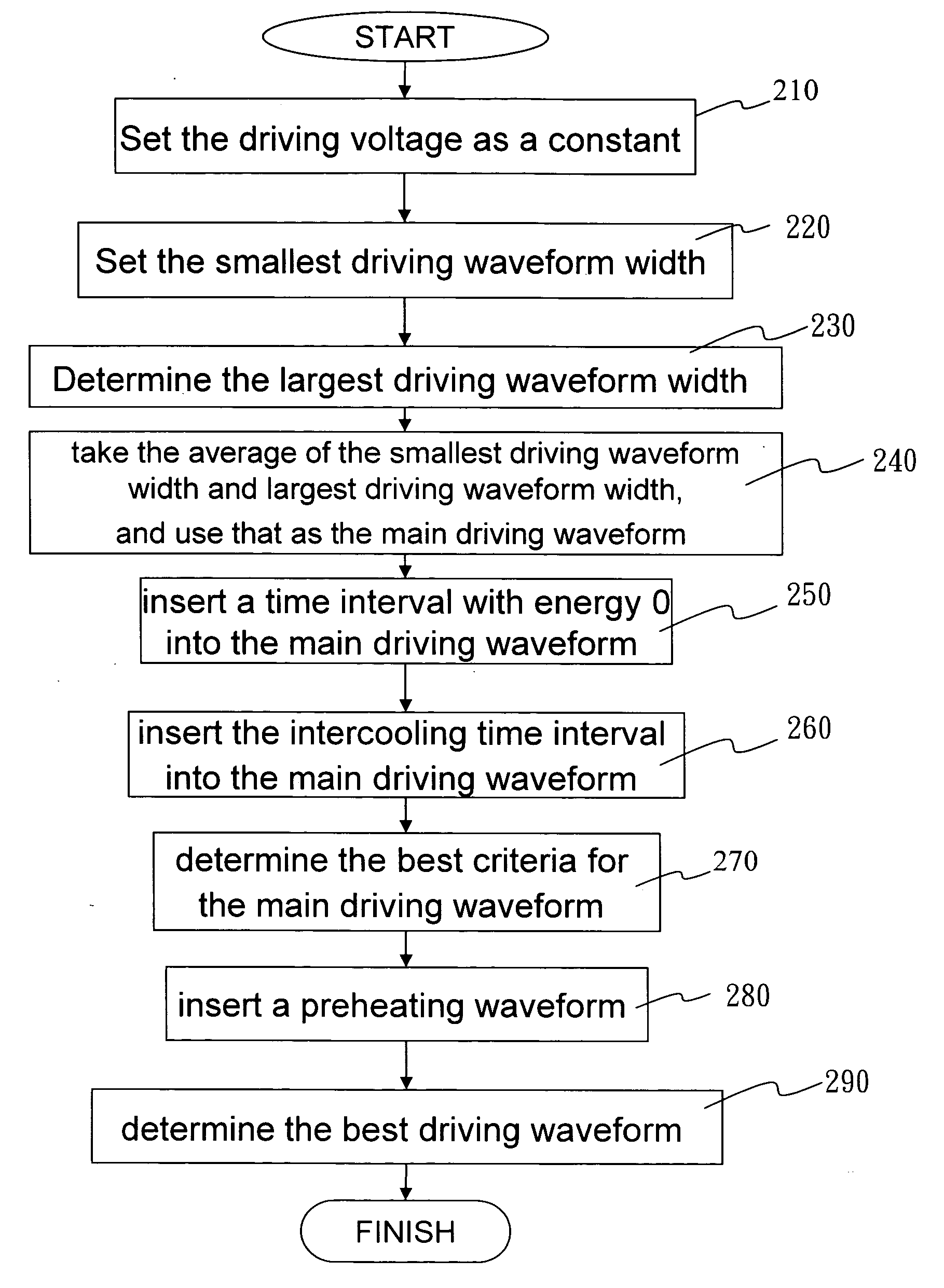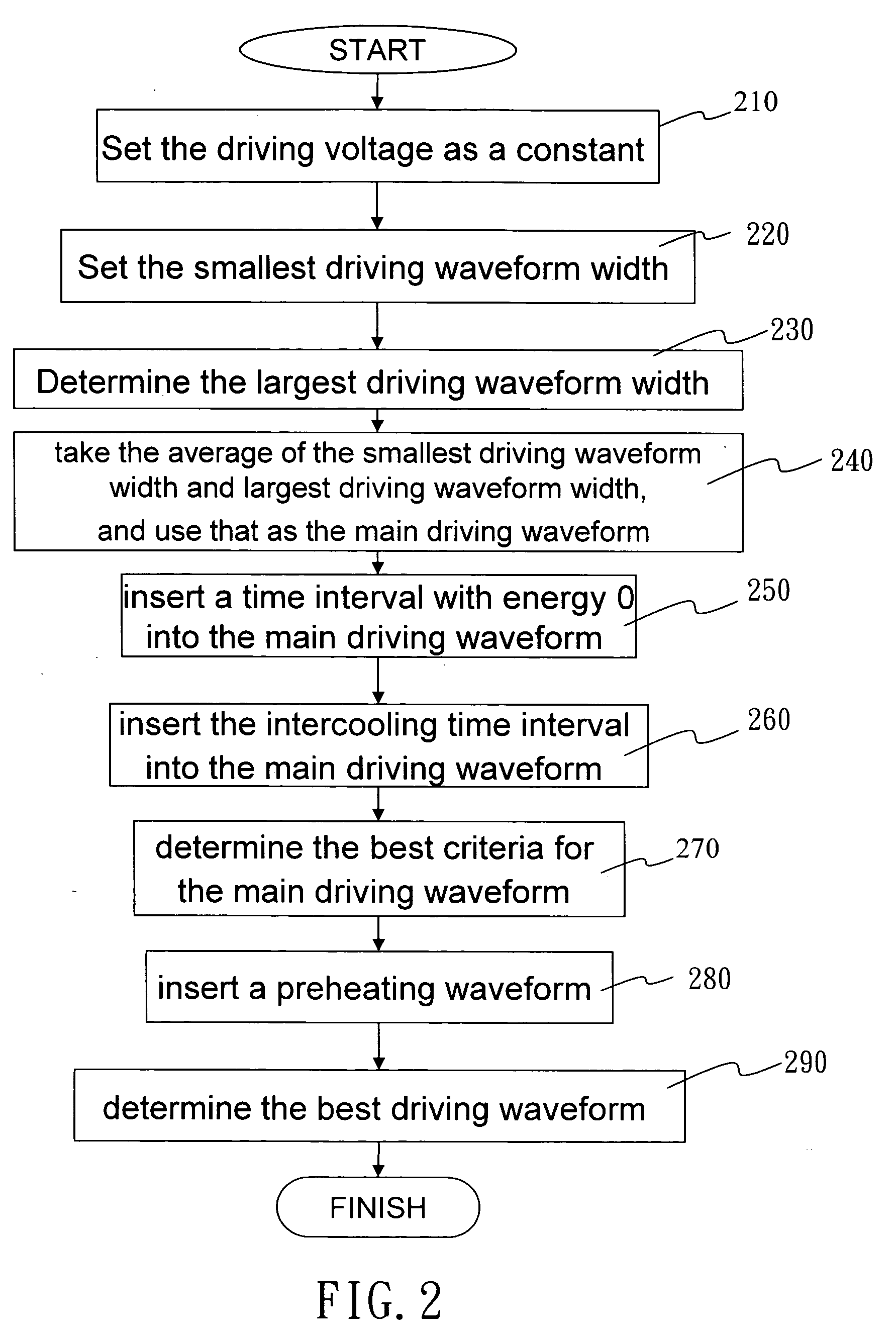Microfluidic inkjet control method
a microfluidic inkjet and control method technology, applied in the direction of coatings, printing, other printing apparatuses, etc., can solve the problems of low performance efficiency, color mixing, and generic inkjet production method of color filter or organic pled, and achieve the effect of reducing the probability of satellite droplet production
- Summary
- Abstract
- Description
- Claims
- Application Information
AI Technical Summary
Benefits of technology
Problems solved by technology
Method used
Image
Examples
Embodiment Construction
The invention adjusts the driving waveform, to reduce the satellite droplets, accompanying the main droplet during the ink ejecting process. When ink is heated at the nozzle, microbubbles appear; at this time, extending the time period between the heating and the ejecting of the ink, and intercooling stages are inserted. The intercooling stages can extend the time period between heating and ejecting of the ink, so that more microbubbles are produced constructing more complete and stronger bubbles and increasing the force that ejects the ink droplets out of the nozzle. The ejecting property of the ink droplet is improved as the ejection velocity is increased and the flying deviation of the ink droplet is decreased, so the satellite droplets are reduced. A preheating stage waveform, which increases the stability of the ink ejection, is also inserted before the main driving waveform. Preheating can keep the shape of the original shapes of the ink droplets consistent before they are ej...
PUM
 Login to View More
Login to View More Abstract
Description
Claims
Application Information
 Login to View More
Login to View More - R&D
- Intellectual Property
- Life Sciences
- Materials
- Tech Scout
- Unparalleled Data Quality
- Higher Quality Content
- 60% Fewer Hallucinations
Browse by: Latest US Patents, China's latest patents, Technical Efficacy Thesaurus, Application Domain, Technology Topic, Popular Technical Reports.
© 2025 PatSnap. All rights reserved.Legal|Privacy policy|Modern Slavery Act Transparency Statement|Sitemap|About US| Contact US: help@patsnap.com



